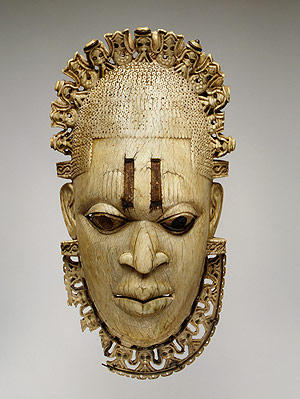
 |
|
|||||||||||||||||||||||||||||||||||||||||||||||||
 |
Slavery Slavery is a practice that as been in existence since the dawn of Man. From the very beginnings of recorded history slaves have been used by a range of different cultures and civilizations. From the Ancient Egyptians to the Romans and Muslims, slavery as been a practice that until very recently was considered normal in civilized society. |
Black slaves did not begin to appear in European records proper until the 11th and 12th centuries. At the time when Christian kingdoms were conquering territory held by Islam and captured the ‘black' slaves that the Muslims had previously possessed.
The Impact of Slavery on the Kingdoms
But the forest Kingdoms of the Yoruba knew nothing of these tides of change beyond its borders. At the time many of the kingdoms had slaves as royal retainers, often in metalworking and other honoured occupations. However the Western Europeans had discovered new lands and had possessed them as their own and with this came mounting demands for new sources of slave labour to work them. From the 16th century onwards the large scale trade in slaves from the forest regions developed. One of the reasons why the trade in slaves initially flourished in the forest regions was the fact that the Yoruba kingdoms viewed themselves as separate disparate entities. Each were proud and saw themselves as members of distinct societies and cultures different and more powerful then the others. This belief persisted in complete contrast to their obvious religious, political and linguistic similarities. From this belief the trade in slaves thrived and would become the dominant factor in the economic and political landscape across much of the Yoruba kingdoms. It would set armies marching and have an impact hundreds of miles inland from the coast. In the battles that waged to supply the trade in slaves, some of the kingdoms would expand, others would shrink or vanish completely. Initially Ile-Ife was the most powerful settlement religiously and economically due to its central position across the major trade routes northward from the forests. But power soon shifted to the Kingdom of Benin which was the first city-state in the area to profit from the large-scale trade in slaves. However, unable to cope with the upheaval and warfare such a trade generated, Benin went through a rapid decline. By the mid-18th century it had lost control of most of its dependencies. But at this time the Kingdom of Oyo with its capital at Katunga near the middle Niger was advancing its own imperial ambitions. Having expanded northwards, Oyo moved south to absorb Lagos and Badagri, both of which were important ports of embarkation for the slave trade. Oyo with its armies composed of well trained foot soldiers and calvary units were seemingly unbeatable as they continued to expand in territory and wealth. At the height of its power from 1730 to 1748 the extent of the Empire reached well into the kingdoms of Egba, Egbado, Popo, Sabe and Ketu. At the time it had also forced the powerful state of Dahomey to the west of Yorubaland to become its tributary. But the wars raged by the kingdom of Oyo was feeding the European need for slaves. It seemed that the expansionist ambitions of the Oyo was been driven by the needs of the Europeans.Was the enslaving of their enemies a consequence of war or did it become a reason to go to war? The answer possibly lies in the fact that when the European need for slaves began to wane during the 19th century the Oyo Empire also started to decline. Economically they had become too reliant in the trading of slaves with the Europeans and when the market slumped so did their Empire.
|